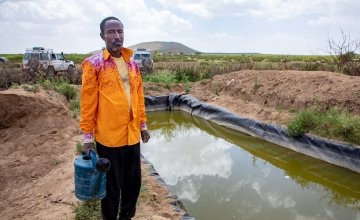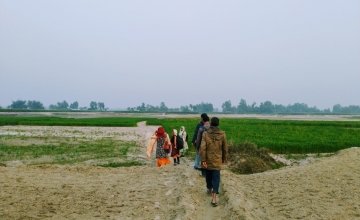
Knowledge Hub
Climate finance fails to reach most vulnerable nations facing climate chaos

Wealthy countries have failed to allocate sufficient climate finance to nations most vulnerable to climate change. The funds delivered, which are already lower than promised, are instead directed to tackling climate chaos in less climate vulnerable countries that are more stable, according to new research from Zurich Flood Resilience Alliance partners Mercy Corps and Concern Worldwide.
In 2009, wealthy countries promised to mobilise $100 billion a year in climate finance by 2020, but this deadline is at risk of being missed with support for building community resilience to natural hazards shockingly low, according to the report At What Cost?
Concern Worldwide’s Senior Resilience Policy Officer Sally Tyldesley says the global community is failing to invest appropriately in tackling climate chaos.
“Research from the Red Cross has revealed that, without action, climate-related disasters will lead to 200 million people needing humanitarian aid each year by 2050. If we don’t act decisively, climate chaos will have devastating impacts in the world’s most fragile nations, such as more intense and frequent weather-related hazards like floods and droughts. These hazards can destroy homes and livelihoods, damage essential infrastructure like schools, ruin harvests, hamper trade and human development.”

Ann Vaughan of Mercy Corps says, “Wealthy nations have mobilised trillions in their fight against COVID-19. Yet climate change remains a grave threat to humanity. Donors must also ensure climate finance reaches fragile states and climate vulnerable countries with the poorest populations.”
The report’s recommendations include calling on donor countries to:
- build climate change resilience into COVID-19 recovery plans;
- honour existing commitments and invest $50 billion in public finance by the end of 2020;
- set ambitious new targets for climate finance for the next five years to meet growing needs; including doubling the climate finance going to the most fragile and climate vulnerable countries;
- support fragile and vulnerable countries to adapt to the impacts of climate change and build resilience to natural hazards for the long-term.
Not prioritised
The report says there are many reasons why countries most at risk from climate chaos are not prioritised for climate finance, such as:
- bilateral donors in particular have been found to preferentially allocate finances to countries that have a stable and hospitable business environment
- donors financing strategies have also been shown to be based on political or historical alliances and geography.
To read the full report visit: https://floodresilience.net/resources/item/at-what-cost-how-chronic-gaps-in-adaptation-finance-expose-the-world-s-poorest-people-to-climate-chaos
For media interviews, contact Hannah Myerson, Senior Communications Officer, Concern Worldwide at [email protected].
Notes to the Editor
The “At What Cost?” report uses publicly available data to analyse how climate finance is invested on climate change adaptation and disaster risk reduction, and to determine where finance is flowing compared to need. Analyses included correlations between Climate Change Adaptation (CCA) /Distaster Risk Reduction (DRR) finance (per capita of those living in extreme poverty) and climate vulnerability (ND-GAIN index).
With the exception of Micronesia, the countries ranked the ten most vulnerable to climate change (Somalia being the most vulnerable) receive chronic under-funding from wealthy nations to help people adapt to the inevitable impacts of climate change (climate change adaptation) and build community resilience to natural hazards (disaster risk reduction).
The Zurich Flood Resilience Alliance finds practical ways to help save lives by strengthening community resilience to floods globally. Established in 2013, the nine-member alliance, with the exception of Zurich Insurance Group, is funded by the Z Zurich Foundation.
Other ways to help
Donate now
Give a one-off, or a monthly, donation today.
Join an event
From mountain trekking to marathon running, join us for one of our many exciting outdoor events!
Buy a gift
With an extensive range of alternative gifts, we have something to suit everybody.
Leave a gift in your will
Leave the world a better place with a life-changing legacy.
Become a corporate supporter
We partner with a range of organisations that share our passion and the results have been fantastic.
Create your own fundraising event
Raise money for Concern by organising your own charity fundraising event.


